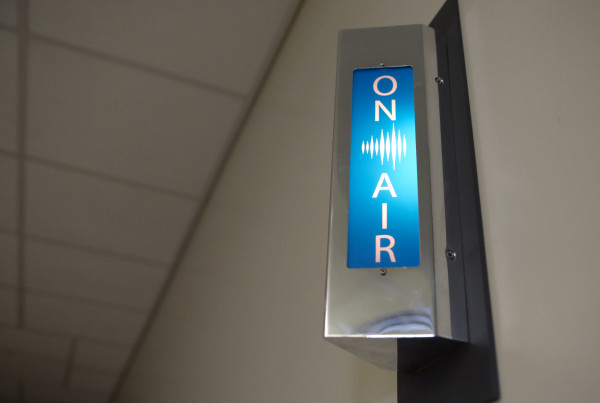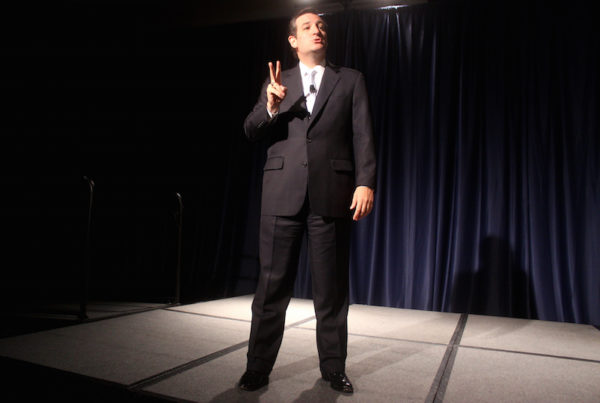From Houston Public Media:
If you’re trying to get ahead in your career, or just sell an idea, you’ve probably been told to craft an “elevator speech.” That’s a clear, brief message about yourself and your work. Or a tiny talk you can memorize and use during interviews or meetings. Or when you get that proverbial chance encounter in the elevator with your company’s president.
Entrepreneurs have been using them forever. Now the idea is gaining traction among scientists.
They know how to talk about their research, but they’re usually speaking to other scientists, according to Carrie Cameron, an assistant professor at the UT Graduate School of Biomedical Scientists.
Cameron organized the school’s first-ever elevator speech competition, which forced graduate students to pull back from the data and the details of their research, and figure out how to explain their work to almost anyone.
“It has to be intelligible, it has to be 90 seconds, and it has to be fun,” Cameron said.
Cameron herself trained as a linguist.
“I like to see how I can work with the students to kind of unleash their own creativity, and get them in touch with the linguistic side of their science, and not just the technical side,” she said.
The final round took place on June 30. One by one, 10 Ph.D. candidates approached the microphone and turned to face an auditorium filled with their teachers, lab partners, and friends. The crowd was friendly and forgiving.
“The different effects on – uh, can produce different quality wines…I forgot,” one competitor said. “Can I start over? Can I do that?”
She could, and she did. She compared variations in the microenvironments of tumors to the variations in vineyard soils, which can change how grapes grow and taste.
Other speakers also used metaphors from everyday life to help non-scientists visualize and relate to their work. Michael McGuire, who studies ovarian cancer, said cancer cells know how to adjust the thermostat.
“Just like people turning on air-conditioning, cancer likes to adjust its surrounding to just the right amount, but it needs help from surrounding cells to do so,” McGuire said.
Now, he has to explain the goal of the research.
“By studying what happens when cancer’s cellular neighbor uptake its mutations, we hope to explain how cancer so perfectly calibrates its environmental thermostat,” McGuire added.
Another contestant, Kimiya Memarzadeh, began this way: “I work on saposin proteins. So, what are saposin proteins and why should you care?”
Memarzadeh explained that mutations in those proteins can cause disorders such as Tay-Sachs disease and Gaucher disease.
Having explained why it matters, she then introduced two new characters, lysosomes, and endosomes, and began to build her metaphor.
“Now, I want you to think of the cell as a city,” Memarzadeh said. “If the nucleus is the city hall, and the mitochondria are the power plants, I want you to think of the lysosome as the cell’s waste plant and the endosome as the trash trucks that transport waste to the waste plant.”
She went on: “Now in the context of our city, saposin proteins are the waste plant workers, and if they don’t function properly, there’s a build-up of waste in the waste plant. It makes sense, right?”
The judges liked her speech, awarding Memarzadeh second place in her category.
Kimiya won $350 but says the reason she entered the contest was to force herself to practice public speaking.
“I think talking and writing are a scientist’s two biggest weapons in their artillery as far as being able to get funding, being able to convince people that your research is significant and important,” she said.
Carrie Cameron, the contest organizer, agreed that communication skills could help scientists compete at a time when funding for basic research has declined.
But she said the skills can also help scientists do better science.
“As we move into large, inter-disciplinary ‘team science,’ the scientists themselves do not know how to communicate with one another,” Cameron said. “The scientists on a team are doing so many different kinds of science that it’s hard for them to understand what each other is doing, and how they fit into the team. That’s one of the most important goals of this kind of communication.”
Some of the graduate students confided there had been another, unexpected benefit: they had finally found a better way to explain to their relatives and friends what exactly they do all day in the lab.
















